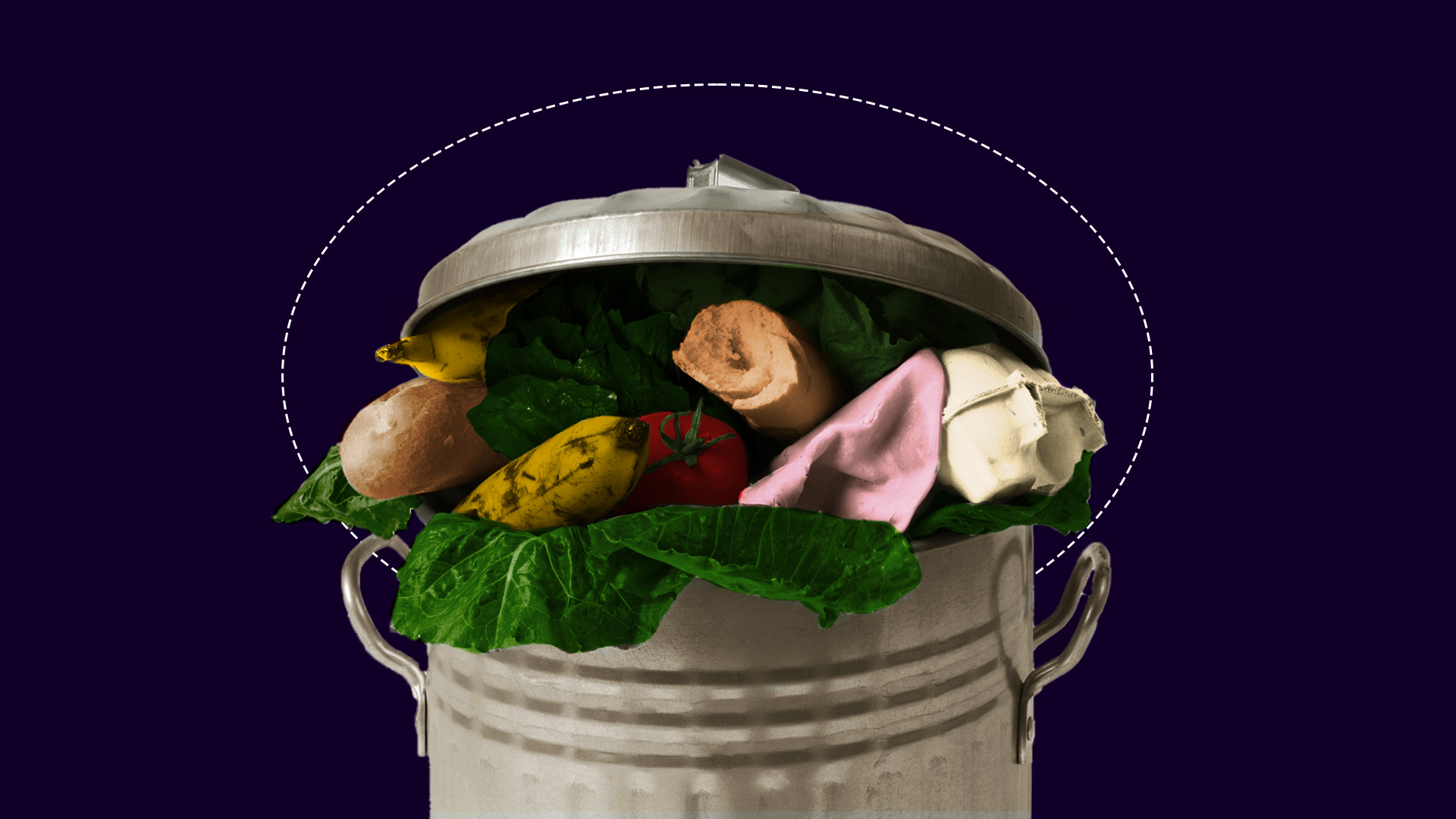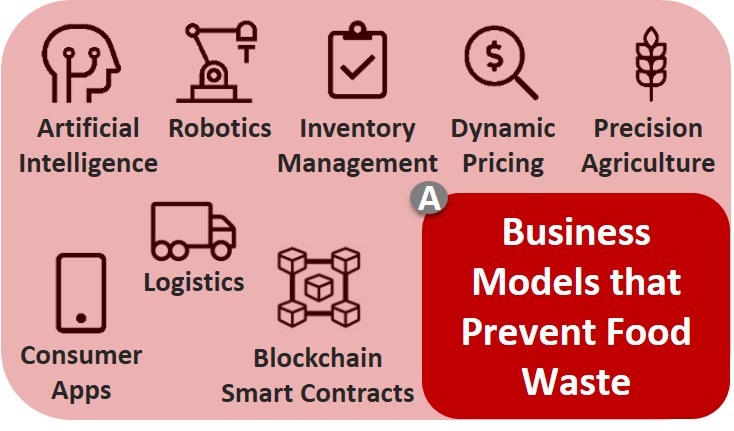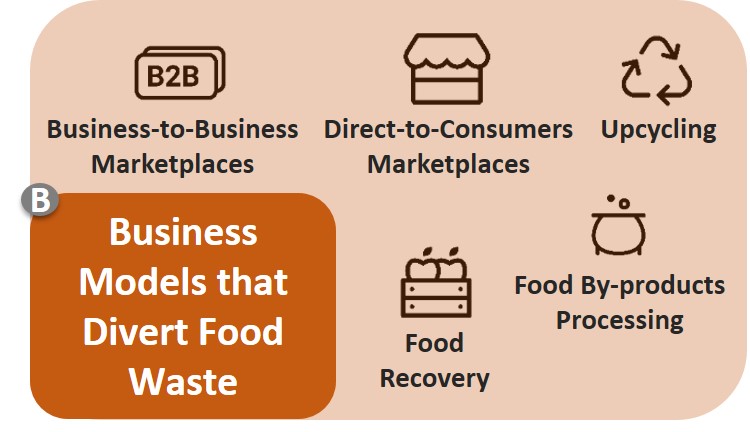Agriculture and Agri-Food Canada
Food Waste Reduction Challenge: Business Models
Back to all challenges
The Challenge
1. Overview
Together, We Can Reduce Food Waste.
Globally, food waste accounts for 8% of the world’s greenhouse gas emissions, largely from edible food decomposing in landfills. In Canada, more than half of our food supply is wasted every year - that’s over 50 billion dollars in avoidable food waste.
Solving the problem of food waste is complex and needs a variety of solutions. That is why the Challenge includes four targeted innovation streams to accelerate and advance the deployment of diverse and high-impact solutions to food waste in Canada.
Solutions can focus on preventing or diverting food waste at any point from farm to plate and should aim to make a dramatic and measurable reduction in food waste. Challenge Streams A and B are closed for new applications. The application deadline was January 18, 2021. Challenge Streams C and D are now closed for applications.
2. The Challenge Streams

Streams A and B
Challenge Streams A and B are closed for applications. They support solutions that are ready for commercialization and that provide an innovative way of doing business (i.e. a new business model) to prevent or divert food waste across any or multiple segments of the food supply chain. These streams target solutions in their early commercialization phase to accelerate their growth and expansion in the Canadian market. Successful solutions will have a high impact in reducing the volume of food waste in absolute (total volume of food saved) or relative terms (percentage of food saved).

Streams C and D
Challenge Streams C and D are now closed for applications. They support novel technologies at the prototyping or testing phase which extend the life of perishable food or which transform surplus food (or food by-products) that would otherwise be wasted into another product. These streams target technologies in their early development phase to accelerate their advancement and prospective deployment in the Canadian market. Successful solutions are advancing technologies to make them more effective, efficient, scalable, and competitive.
- Stream C focuses on technologies that extend the life of perishable foods by finding ways to slow the degradation of perishable food items and extend the length of time these food items may be stored before they become spoiled.
- Stream D focuses on technologies that transform food waste by converting surplus food, food by-products, or food waste into other products, including: food for humans, food for animals/insects (e.g. animal feed), or non-food products.
3. Challenge Statements for Streams A and B
AAFC is calling on food waste innovators to accelerate and scale the deployment of solutions that prevent food waste and/or divert food away from landfills.

Stream A: Business Models that Prevent Food Waste
Accelerate and scale the deployment of innovative solutions that prevent food waste across the food supply chain.

Stream B: Business Models that Divert Food Waste
Accelerate and scale the deployment of innovative solutions that create value from food waste, food by-products and/or surplus food.
4. Challenge Objectives & Assessment Criteria of Streams A and B
AAFC is calling on innovators to submit a concept application for solutions that:
- Can measurably reduce food waste – in dollars and metric tonnes;
- Are innovative and disruptive to the status quo – the old way of doing business is out;
- Are ready to scale up – it is time to deploy high-impact and wide-reaching solutions across the Canadian food supply chain;
- Have a strong business case – there is a demand for your solution;
- Make a difference to our communities – creating jobs and increasing access to safe, nutritious, and high-quality food is a priority; and,
- Improve our environment – reducing food waste means shrinking our GHG footprint and conserving natural resources.
For more information on the assessment criteria for Streams A and B, please see the Applicant Guide.
5. Key Dates for Challenge Streams A and B
-
Stage 1 Concept Application
Challenge Streams A and B are launched, and application intake is from November 19, 2020, until January 18, 2021. Up to 30 Semi-Finalists with the most promising solutions across both streams will receive approximately $100,000 in Spring 2021 and move on to Stage 2. -
Stage 2 Market Demonstration Results
Beginning in Spring 2021, Semi-Finalists will demonstrate the success of their solutions with an implementation partner in Canada over an eight-month period. Up to 12 Semi-Finalists with the most impressive results from Stage 2 will receive approximately $400,000 in Spring 2022 and will move on to become Stage 3 Finalists. -
Stage 3 Grow and Scale
Finalists at this stage will grow and scale up their solutions in Canada over a one-year period starting in Spring 2022. Up to two Finalists with the most impressive results from Stage 3 will receive approximately $1,500,000 in early 2024 and become a Grand Prize Winner for The Food Waste Reduction Challenge – Streams A and B.
Note: The number of winners and prize amounts are approximations and may vary depending on the applications received.
6. Eligible Applicants for Challenge Streams A and B
The Food Waste Reduction Challenge is open to commercial and non-commercial organizations and individuals registered to do business in Canada. Specifically you can apply if you are:
- A business and/or social enterprise of any size
- A not-for-profit and/or charitable organization
- An Indigenous organization and/or group
- A post-secondary/academic institution
- An Individual or group of individuals
International applicants with a Canadian partner or an ability to register to do business in Canada are encouraged to apply. Ideas and concepts can originate from anywhere globally, but to receive funding under the Challenge, the solutions presented in the submissions must be tested, piloted, demonstrated, and deployed in Canada.
The Applicant Guide for Streams A and B provides more details about the eligibility criteria for these streams.
7. Challenge Stream Selection Tool
Our interactive tool should help you identify which stream is the best fit for your solution.
Challenge details: Streams A and B
Who can apply?
- Businesses and social enterprises of any size
- Not-for-profit and charitable organizations
- Indigenous organizations and groups
- Post-secondary/academic institutions
- Individuals or group of individuals
International applicants with a Canadian partner or an ability to register to do business in Canada are encouraged to apply.
Key Dates
- Stage 1 – Concept Application Deadline: January 18, 2021
- Up to 30 Semi-Finalists Announced: Late Winter/Early Spring 2021
- Stage 2 Ends – Up to 12 Finalists Announced: Late Winter/Early Spring 2022
- Stage 3 Ends - Grand Prize Winners Announced: Early 2024
Prizes
- Up to 30 Semi-Finalists will be selected in Stage 1 and will receive approximately $100,000
- Semi-Finalists will move into Stage 2 and compete for a chance to be a Finalist and receive approximately $400,000
- Up to 12 Finalists will compete in Stage 3 to win one of two Grand Prizes of up to $1,500,000
Note: The number of winners and prize amounts may vary depending on the applications received.